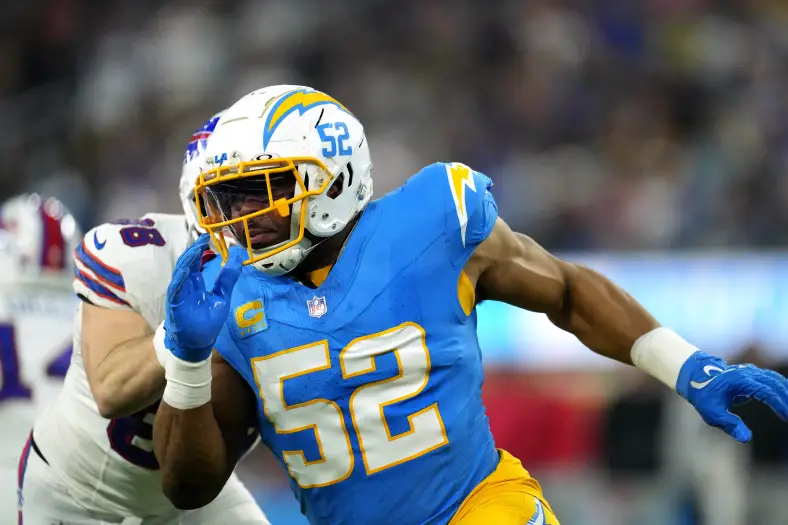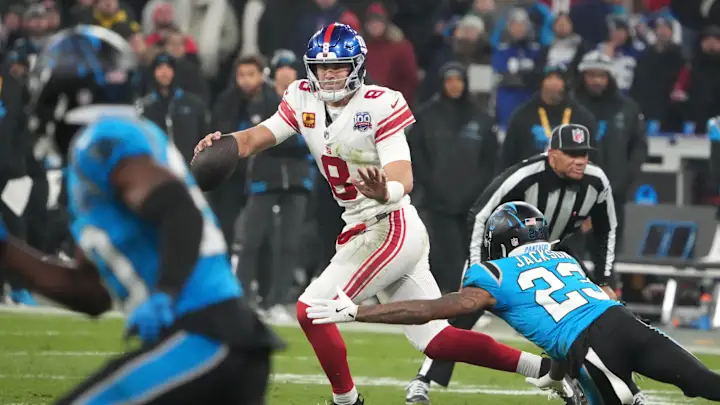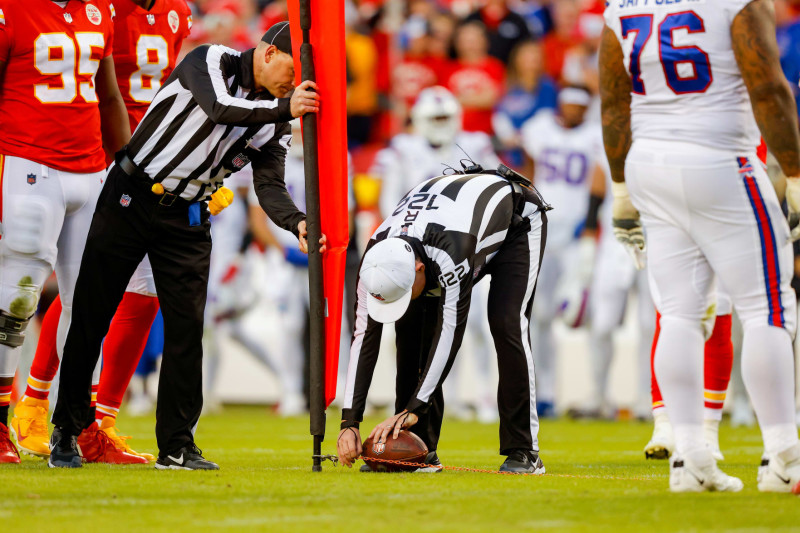The NFL has evolved dramatically over the past few decades, both on and off the field. Looking forward, the future of the NFL is set to bring even more groundbreaking changes, influenced by factors ranging from technological innovation to shifting fan expectations and economic pressures. With so much at stake, it’s worth examining where the league might be headed over the next decade and beyond.
A High-Powered Financial Future: Increasing Salaries and Revenue
One of the most notable aspects of the future of the NFL is the continued rise in player salaries and league revenue. The NFL has experienced massive growth in financial terms, thanks to its enormous TV contracts, advertising revenue, and international reach. As media companies vie for exclusive streaming and broadcast rights, the NFL will likely negotiate even higher television and streaming deals. The success of NFL partnerships with networks like ESPN, FOX, and CBS has shown the potential of American football to attract vast audiences.
This boost in revenue will translate to increasing player salaries, with top-tier quarterbacks and skill players likely breaking new records in contract sizes. Patrick Mahomes’ 10-year, $450 million contract with the Kansas City Chiefs set a new standard for elite players, but in the future of the NFL, we may see even more substantial deals. Players like Joe Burrow, Justin Herbert, and other emerging stars could command contracts nearing or even surpassing the billion-dollar mark over their careers.
While high salaries may attract elite athletes to football, they can also create salary cap challenges for teams. Future contract negotiations may focus on balancing the desire for lucrative player deals with the need to maintain competitive, balanced rosters.
Embracing Advanced Technology: The Rise of Data and Analytics
Another prominent trend shaping the future of the NFL is the continued integration of technology and analytics. NFL teams increasingly use data to gain competitive advantages, from monitoring player performance to developing in-depth strategies. Advanced analytics can assess everything from optimal game strategies to health and performance predictions, allowing coaches to make more informed decisions on the field.
Beyond analytics, wearable technology and AI-driven health monitoring are revolutionizing how teams track player conditions. Sensors embedded in uniforms, helmets, and pads can measure vital statistics, impact forces, and fatigue levels. As the league prioritizes player safety, this technology can help detect injuries early on, potentially extending players’ careers.
Additionally, virtual reality (VR) and augmented reality (AR) are being used for training, allowing players to practice in virtual settings that replicate real-game scenarios. In the future of the NFL, this could allow athletes to enhance their skills without risking injuries from physical drills, thus supporting both safety and skill development.
Legal and Social Challenges: Balancing Image and Issues
The future of the NFL will continue to be influenced by players’ actions both on and off the field. Player misconduct, such as legal issues and violations of league policies, has impacted the NFL’s image in recent years. Maintaining a professional image is vital for attracting sponsors, securing viewership, and gaining the public’s trust. As a result, the league may adopt stricter disciplinary policies to deter players from engaging in damaging behavior.
Increased public scrutiny and social media’s role in amplifying incidents mean the NFL will need to focus on its brand’s reputation. The league may also place a greater emphasis on character and background checks during the draft process to mitigate the risks of signing players who could potentially tarnish its image. The NFL’s commitment to community programs and charitable initiatives may also increase, providing players and teams with ways to build positive public relations and contribute meaningfully to society.
Expanding Globally: International Games and Talent
With the future of the NFL, the league is expected to extend its reach beyond American borders to tap into the lucrative international sports market. The NFL has already had success with games held in London, Mexico City, and Germany, where local fan support has been robust. As these international games attract larger audiences and boost viewership, the league will likely schedule more games overseas.
A global expansion could also bring a diverse pool of talent to the NFL. International athletes are already being recruited and developed through programs like the NFL International Player Pathway, designed to cultivate elite talent outside the U.S. In the future of the NFL, we might see a broader representation of athletes from Europe, Asia, and Africa joining NFL rosters and possibly contributing to the rise of new star players from these regions.
Additionally, the NFL may consider a franchise outside the United States. Although challenging, a European or Mexican NFL franchise could add significant revenue and open doors for a truly global presence.
Innovations in Fan Engagement: Virtual and Augmented Reality Experiences
The fan experience is also poised for dramatic changes in the future of the NFL. With advances in VR and AR, fans could soon experience games in a way that transcends the stadium. Virtual reality headsets and augmented reality apps could offer a new, immersive viewing experience, allowing fans to feel as though they’re on the sidelines or even interacting with their favorite players. Additionally, enhanced stadium technology, such as holographic displays and instant replays, could make attending an NFL game even more engaging and entertaining.
The integration of social media and digital platforms will continue to play a central role in connecting fans with teams. Fans could use these platforms for real-time interaction, voting on game-time decisions or participating in virtual fan meet-ups. Expect to see more personalized content for fans and targeted digital experiences, such as exclusive access to training camps, locker rooms, and behind-the-scenes interviews.
Player Health and Safety: A Lasting Priority
One of the primary concerns for the future of the NFL will be ensuring the safety and health of players. Concussions and other physical injuries are serious issues that have prompted the NFL to introduce numerous safety initiatives, from helmet technology to changes in gameplay. This commitment to safety will likely intensify, with further advancements in equipment technology and rule modifications aimed at reducing the risk of head injuries and long-term health problems for players.
In addition to protecting players’ physical health, the NFL has made strides in supporting their mental health. Resources like counseling, therapy, and life coaching are becoming available to help players cope with the pressures of professional sports. To understand more about different types of therapeutic support, visit https://www.betterhelp.com/
Greater Transparency in Officiating
The officiating in the NFL has long been a topic of debate, with questionable calls sparking controversy among fans. In the future of the NFL, expect greater transparency in officiating, perhaps through increased reliance on technology for instant replay and reviews. By utilizing AI to analyze plays and make objective decisions, the NFL could improve the accuracy of calls and reduce human error.
New measures like allowing fans to hear official explanations for calls or challenging specific plays may enhance the game’s credibility and assure fans of a fair outcome. This transparency will be key to maintaining fan trust and ensuring that officiating aligns with the high standards expected in professional sports.
The Evolution of Coaching and Training
As the future of the NFL unfolds, coaching methodologies and training programs will also adapt to modern demands. In the coming years, NFL coaches could rely even more on data analytics and artificial intelligence to create game plans, optimize player performance, and identify areas for improvement.
Training facilities will incorporate cutting-edge tools, such as AI-driven programs, to analyze player performance and develop personalized training regimens. By combining data analytics with practical coaching insights, teams will be better equipped to maximize player development and maintain peak physical conditioning throughout the season. Coaches may also find ways to incorporate cognitive training to improve players’ decision-making and mental acuity on the field.
Potential Legal and Economic Challenges
The NFL’s bright future isn’t without potential challenges. Legal battles, including disputes over player rights and compensation, could have significant implications for the league’s future structure. Additionally, as player salaries rise, owners and franchise managers may struggle to balance revenue streams while maintaining a competitive roster within the salary cap.
Moreover, concerns about concussions and long-term player health could result in lawsuits and calls for increased player protections. Addressing these legal and economic challenges will be crucial in maintaining the long-term viability of the future of the NFL and preserving the league’s financial stability.
A Dynamic Future for the NFL
Ultimately, the future of the NFL promises to be dynamic, driven by evolving technology, increasing global reach, and shifting fan expectations. From rising player salaries and expanding international presence to enhanced fan experiences and greater focus on player health, the league is poised for major transformation. The NFL’s unique blend of entertainment and athleticism has allowed it to remain America’s premier sport, and the league will likely continue to grow and adapt to meet the demands of the modern world.
In the end, the future of the NFL will shape not only the game itself but also its role in global sports culture. With a strong foundation, forward-thinking strategies, and commitment to innovation, the NFL stands ready to lead the way into a new era of sports.



